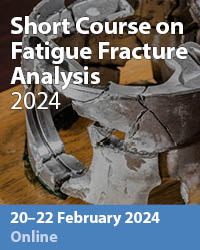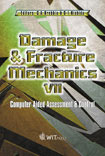A Study To Improve The Measurement Accuracy Of Stress Intensity Factor By The Infrared Method
Price
Free (open access)
Transaction
Volume
37
Pages
Published
2002
Size
428 kb
Paper DOI
10.2495/DM020261
Copyright
WIT Press
Author(s)
T Honda, T Sasaki & E Yoshihisa
Abstract
A study to improve the measurement accuracy of stress intensity factor by the infrared method T. Honda, T. Sasaki & E. Yoshihisa National Institute of Industrial Safety, Japan. Abstract Stress intensity factors evaluated by an infrared stress analysis method have usually been lower than analytical values. In order to reveal the source of the error, an unsteady heat conduction analysis under cyclic loading was carried out and the results were compared with the measurement values. As a result, it was clear that the errors of stress intensity factor between evaluated values and analytical values were caused not by heat conduction but by the plastic zone size of a crack tip. Then, the hybrid method adopting a numerical analysis was developed in order to improve the measurement accuracy of stress intensity factor by the infrared method. The stress intensity factors revalued by this hybrid method were almost somewhat higher than analytical values. 1 Introduction The local stresses and strains near notches or cracks are very important for fracture analyses of cyclically loaded structure components. Thus, a number of experimental methods such as a photoelasticity method and numerical methods such as a finite element analysis have been developed to evaluate stresses and strains near notches or cracks. Among those methods, an infrared stress measurement method, which is based on the measurement of infrared radiation emitted from the surface of a body, can measure a two-dimensional stress distribution of real structure components without preparing special models like a photoelasticity method. When this technique was used to evaluate the stress intensity factors for CT and CCT specimens, the determined values tended to be somewhat lower than numerical results, and the error increased in proportion to those values not to concern with the stress ratio [1]. Thus, in this study, the effect of heat conduction
Keywords





